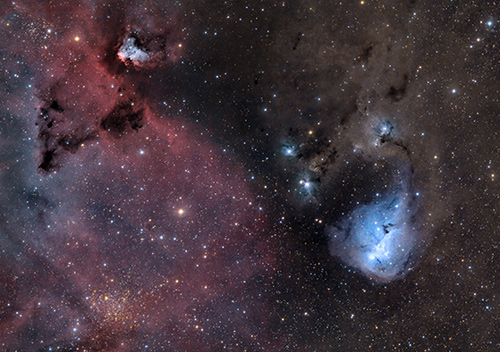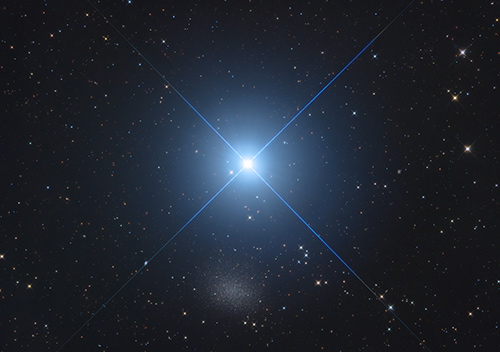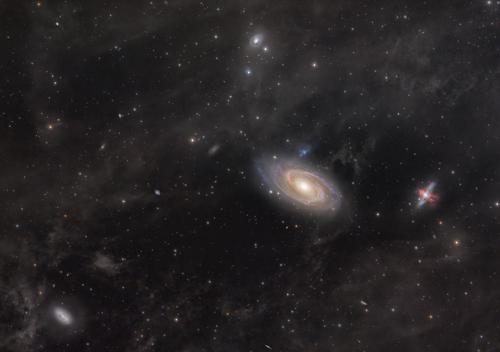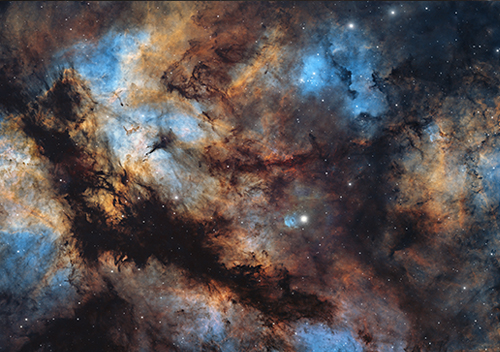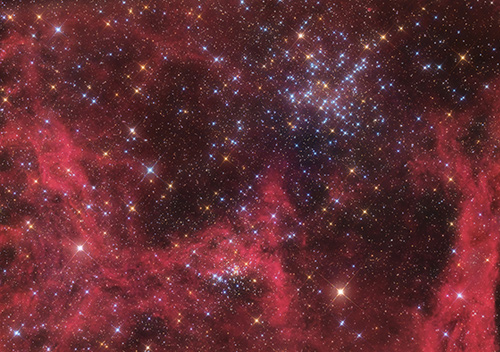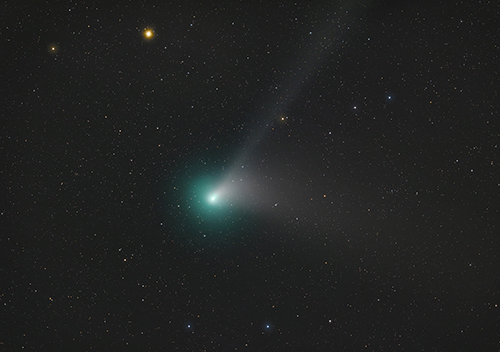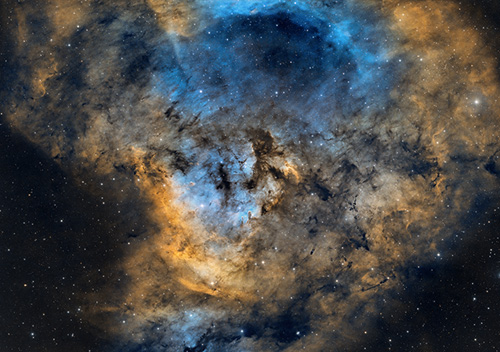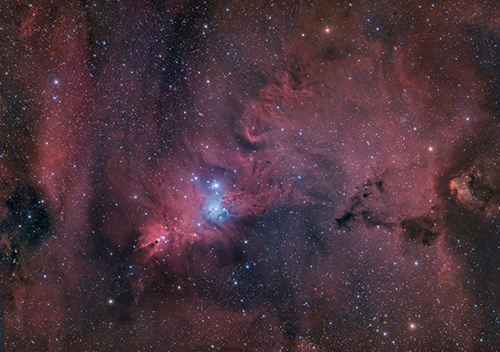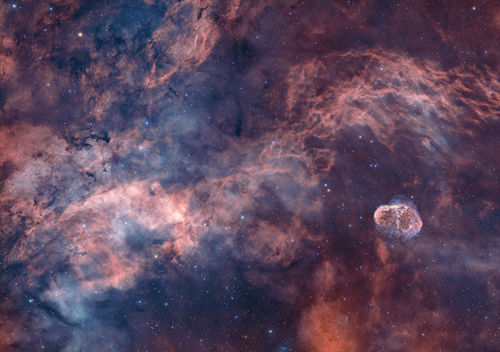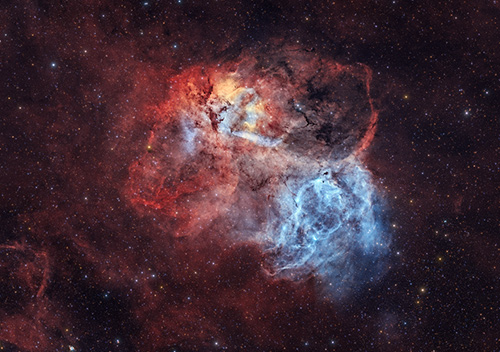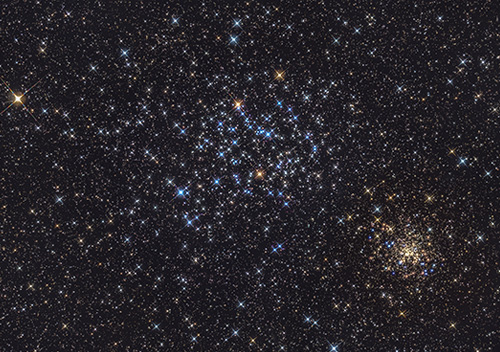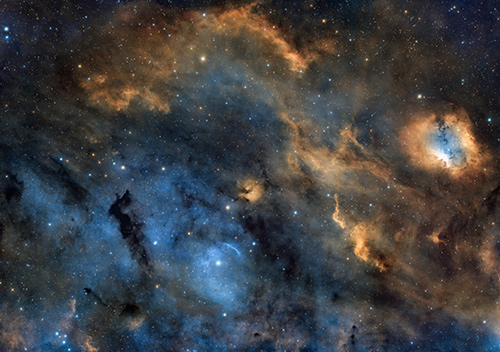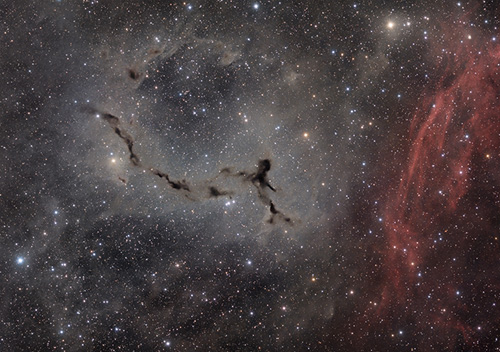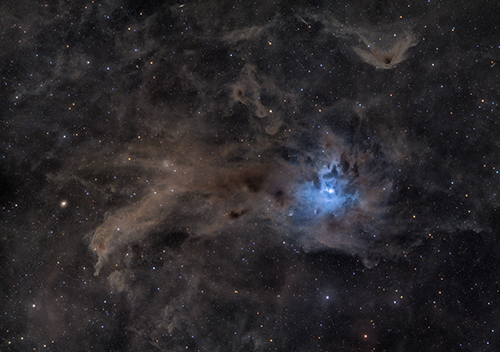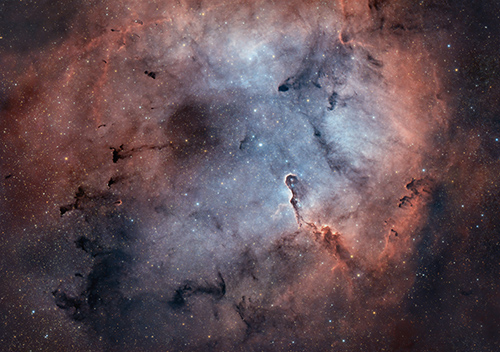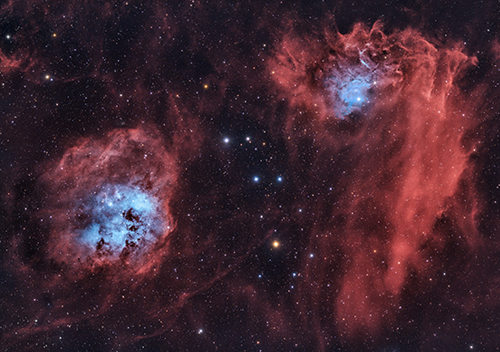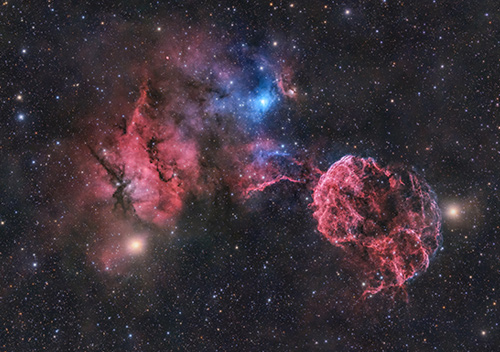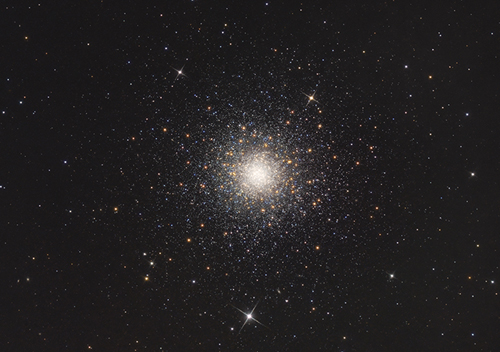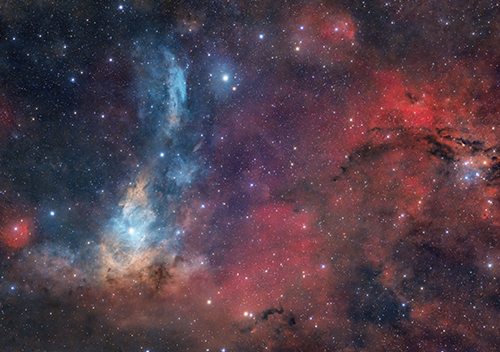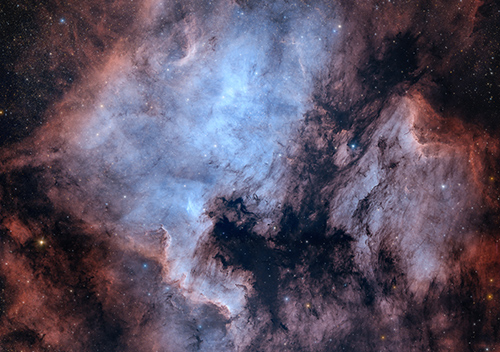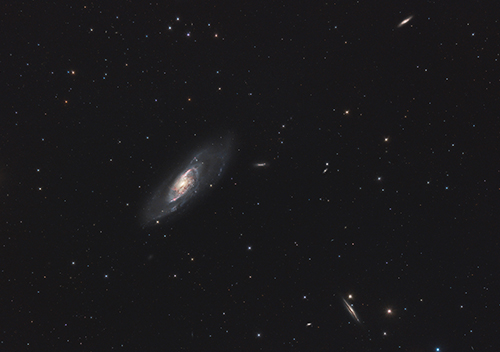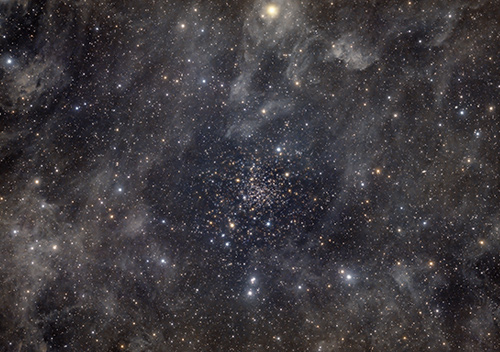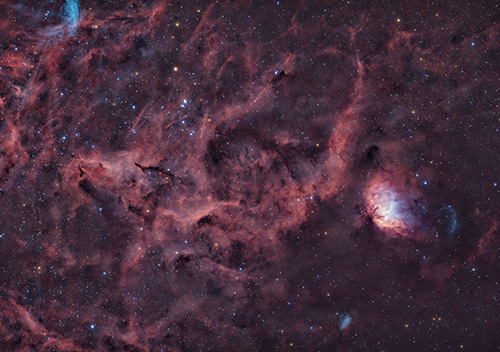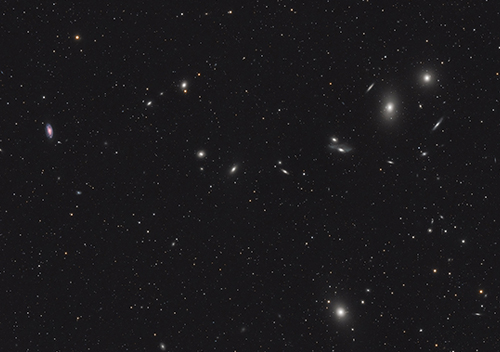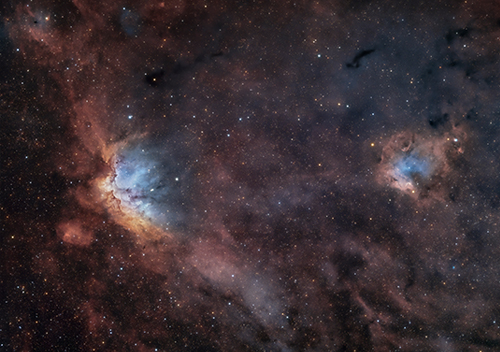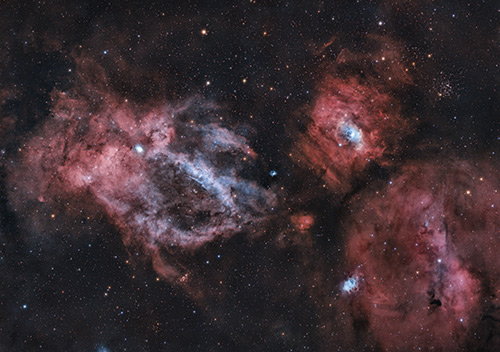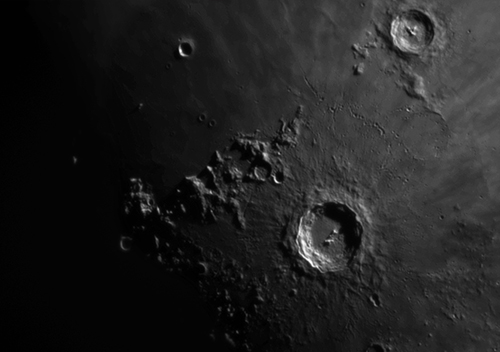
NGC 3184 - a galaxy sheltered by majestic stars
NGC 3184, μ Ursae Majoris
NGC 3184, the Little Pinwheel Galaxy, is an unbarred spiral galaxy located approximately 40 million light-years away in the constellation Ursa Major. Its name comes from its resemblance to the Pinwheel Galaxy. It was discovered on March 18, 1787, by the German-British astronomer William Herschel. The galaxy has two HII regions, known as NGC 3180 and NGC 3181.
NGC 3184 has a high concentration of heavy elements. The blue color of its spiral arms is mainly due to a relatively small number of bright young blue stars. The luminous stars that highlight the arms were formed in massive density waves that circle the center.
The galaxy is estimated to be 26 million light-years away from our Milky Way and has a diameter of 60,000 light-years.
The bright star on the left is μ Ursae Majoris, officially named "Tania Australis," a binary star with an apparent visual magnitude of +3.06, located approximately 230 light-years away from us.
NGC 3184 has a high concentration of heavy elements. The blue color of its spiral arms is mainly due to a relatively small number of bright young blue stars. The luminous stars that highlight the arms were formed in massive density waves that circle the center.
The galaxy is estimated to be 26 million light-years away from our Milky Way and has a diameter of 60,000 light-years.
The bright star on the left is μ Ursae Majoris, officially named "Tania Australis," a binary star with an apparent visual magnitude of +3.06, located approximately 230 light-years away from us.
Astronomical Picture of the Day (APOD) on Apod GrAG

Astronomical Picture of the Day (APOD) on APOD BRASIL



Astronomical Picture of the Day (APOD) on APOD BRASIL

Image Details
| Date |
February 18 & 19, 2025 |
| LOCATion |
Hannover (Germany) |
| Sky Quality |
Bortle 5 |
| Telescope |
Skywatcher 200/1000 @750mm f/3.75 |
| Mount |
Skywatcher EQ6-R Pro |
| Main Cameras |
ZWO ASI 2600 MC Pro Gain 100, Offset 18, -10° TS 2600 MP Gain 100, Offset 200, -10° |
| Focuser |
ZWO EAF |
| Filter |
Baader UV/IR-Cut Filter Antlia EDGE H-alpha 4.5nm |
| Exposure |
RGB: 480 × 60″ (8h) Ha: 338 × 60″ (5h 38') Total: 13h 38‘ |
| Guiding |
ZWO ASI 120MM, PHD2 |
| Calibration |
Flats, Darks, Darkflats |
| Software |
N.I.N.A., EQMod |
| Other |
Starizona Nexus Reducer & Corrector |
| Processing | Astropixelprocessor, Photoshop, Pixinsight |

Gallery

